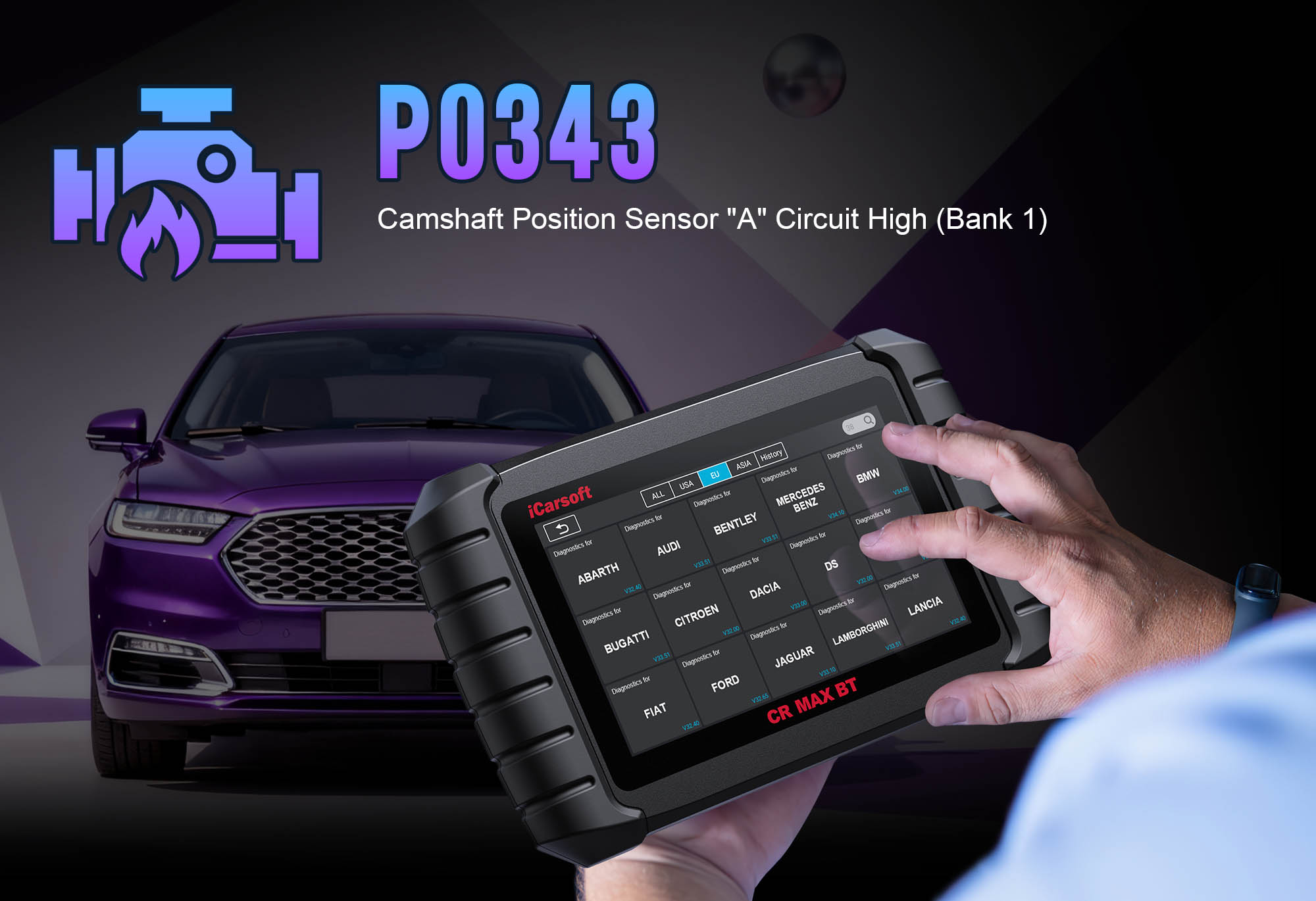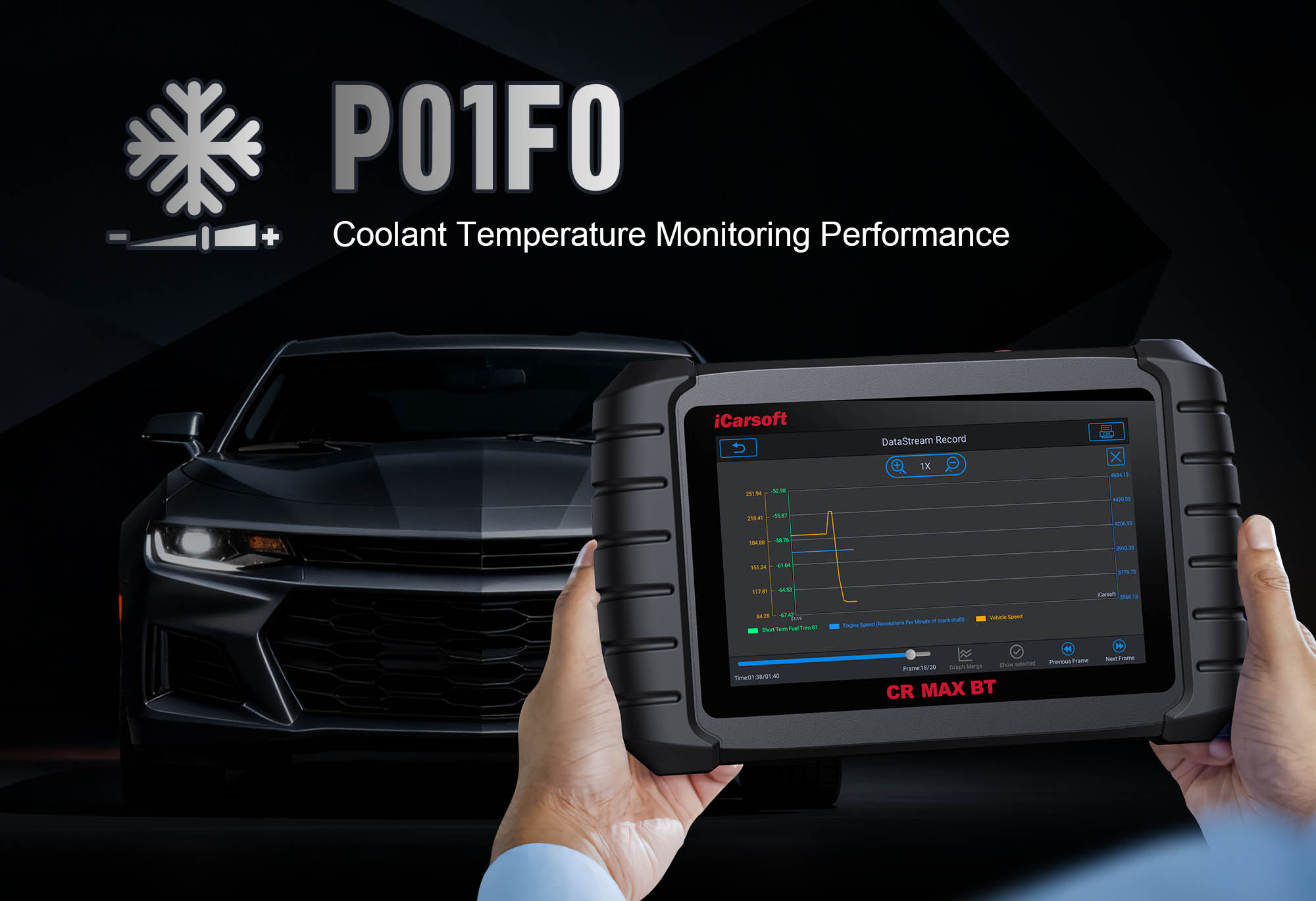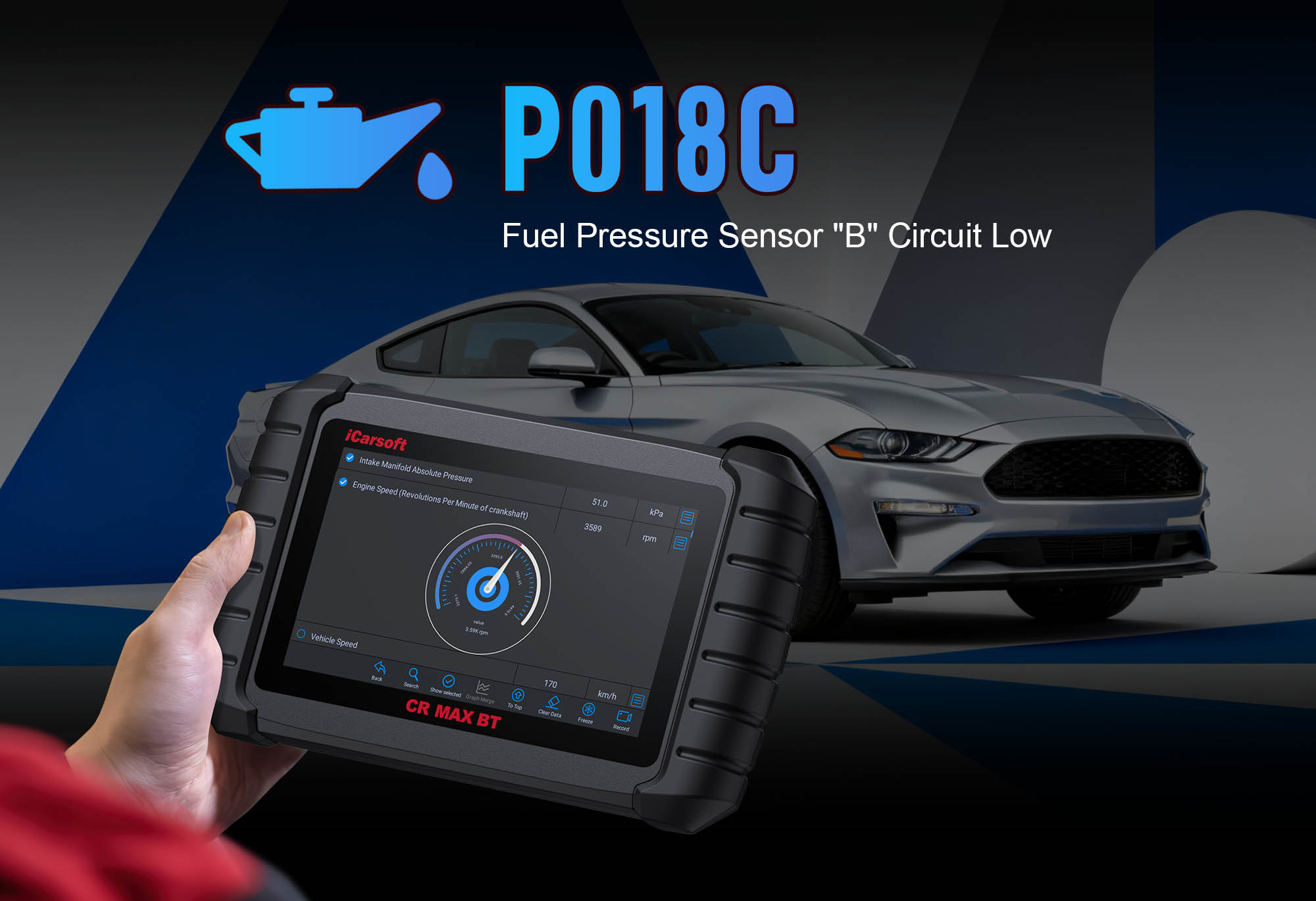Diagnose & Clear P0725 with iCarsoft CR Ultra P
If your vehicle’s transmission shifts erratically, stalls during low-speed maneuvers, or triggers a check engine light paired with poor acceleration, a diagnostic scan will likely return P0725. This OBD-II code stands for "Engine Speed Sensor (Input Shaft Speed Sensor) Circuit Malfunction"—a critical fault in the sensor that monitors the engine’s input speed to the transmission. The Transmission Control Module (TCM) uses this data to synchronize gear shifts, adjust pressure, and ensure smooth power transfer between the engine and transmission. When the sensor fails to send accurate signals (due to wiring issues, sensor damage, or TCM errors), the TCM can’t coordinate shifts, leading to slippage, harsh engagements, or even transmission lockup.
Basic scanners might only flag a "speed sensor issue" but can’t verify sensor accuracy, test circuit continuity, or recalibrate the TCM—leaving you guessing between a faulty sensor, corroded wiring, or module failure. The iCarsoft CR Ultra P, with its OE-level transmission diagnostics, real-time speed tracking, and bi-directional tests, solves this. Let’s break down how to diagnose and resolve P0725 with precision, using the CR Ultra P’s unique features to restore engine speed monitoring and seamless transmission performance.
Understanding P0725: Causes & Key Symptoms
The engine speed sensor (also called the input shaft speed sensor) is typically mounted on the transmission case, near the input shaft. It uses a magnetic coil or hall-effect sensor to detect the rotation of a toothed reluctor ring, generating an AC voltage signal that correlates with speed. The TCM compares this signal to the output shaft speed sensor data to calculate gear ratio and adjust shifts. P0725 triggers when the TCM detects no signal, erratic voltage, or a signal that doesn’t match engine RPM—disrupting shift logic. As the fault worsens, symptoms become dangerous:
Key Symptoms of P0725
-
Harsh or Delayed Shifts: The TCM can’t time shifts correctly, leading to jolts when accelerating (e.g., 1st to 2nd gear) or lag between gear changes.
-
Transmission Slipping: RPMs spike without a corresponding increase in speed, especially under load (e.g., climbing hills).
-
Stalling at Low Speeds: The TCM may cut power during deceleration (e.g., stopping at a red light) as it loses speed reference.
-
Limp Mode Activation: Severe signal loss forces the TCM into limp mode (locks in 2nd or 3rd gear) to prevent damage, limiting speed to 30–40 mph.
-
Inaccurate Speedometer: Some vehicles rely on the engine speed sensor for speedometer data, leading to incorrect readings or a non-functional gauge.
Common Causes of P0725
|
Cause
|
Description
|
|
Faulty Engine Speed Sensor
|
Internal coil failure or magnet degradation causes weak, erratic, or no signal—common after 80,000+ miles of heat and vibration.
|
|
Damaged Wiring/Circuit
|
Frayed wires, rodent chew marks, or corrosion (from transmission fluid leaks) in the sensor harness create open/short circuits.
|
|
Dirty/Defective Reluctor Ring
|
Debris (metal shavings, dirt) on the ring or missing teeth disrupt the sensor’s ability to detect rotation.
|
|
Loose or Corroded Connector
|
The sensor’s 2–3 pin connector (near the transmission) becomes loose, rusted, or oil-soaked, blocking signal flow.
|
|
TCM Malfunction
|
Rarely, the TCM’s internal circuit for processing sensor data fails, misinterpreting valid signals as faulty.
|
Why iCarsoft CR Ultra P Excels at Diagnosing P0725
The CR Ultra P outperforms basic tools with features tailored to transmission speed sensor diagnostics—critical for resolving P0725 accurately:
OE-Level Transmission Data Access
Reads TCM logs, live sensor voltage, and input/output speed comparisons—dealer-grade insights basic scanners lack.
Real-Time Signal Monitoring
Tracks sensor frequency (Hz) and AC voltage during acceleration, identifying erratic patterns signaling P0725.
Bi-Directional Sensor Tests
Sends commands to validate sensor responsiveness, distinguishing faulty sensors from wiring/TCM issues.
Transmission Topology Mapping
Visualizes the entire speed sensor circuit as a color-coded diagram, highlighting breaks or shorts at a glance.
Global Vehicle Coverage
Supports 200+ brands and transmission types (automatic, CVT, dual-clutch), including 2018+ models with DoIP/CAN-FD.
CR Link VCI Compatibility
Seamless connectivity with modern TCMs, unlike older tools limited to basic OBD-II.
41 Hot Service Functions
Includes TCM reset, sensor calibration, and transmission adaptation relearn—essential for post-repair synchronization.
Step-by-Step: Diagnose P0725 with iCarsoft CR Ultra P
-
Safety First & Initial Checks
1. Disconnect negative battery terminal to avoid electrical shorts during diagnostics.
2. Inspect transmission case/sensor area for fluid leaks—oil-soaked wiring/connectors often cause P0725.
3. Locate components via Component Location > Transmission > Engine Speed Sensor:
- Engine Speed Sensor: Transmission case (2-wire sensor with plastic connector, near input shaft).
- Reluctor Ring: Toothed metal ring on input shaft (visible through sensor mounting hole).
- Wiring Harness: Loom connecting sensor to TCM (routed along transmission/under vehicle).
-
Connect Tool & Confirm P0725
Reconnect battery, plug CR Ultra P into OBD-II port, pair with CR Link VCI. Select AutoVIN Identify to retrieve transmission type, sensor specs (voltage/frequency range), and TCM protocol. Navigate to Transmission > Fault Codes > Read Codes to confirm P0725. Tap Code Details for insights (e.g., "Toyota Camry: Voltage 0V, Expected 0.5–1.5V AC"). Note related codes (P0720, P0722) and resolve P0725 first.
-
Use Topology Mapping to Isolate the Fault
Navigate to Transmission > Topology Mapping > Engine Speed Sensor Circuit. Review the color-coded diagram:
- Green: Functional components (stable signal, intact wiring, TCM communication).
- Yellow: Weak signals (loose connector, dirty reluctor ring).
- Red: Faulty components (dead sensor, broken wire, TCM failure).
Focus on red/yellow areas to target further testing.
-
Test Sensor & Circuit Integrity
1. Sensor Resistance & AC Voltage Test: Disconnect sensor, multimeter Ohms—500–1,500 ohms (0/infinite = faulty); reconnect, start engine, AC Voltage probe = 0.5–1.5V fluctuating (0V = sensor/reluctor issue).
2. Live Speed Signal Comparison: Monitor Transmission > Live Data > Speed Sensors: Input speed matches engine RPM (±50 RPM) at idle; output speed correlates with vehicle speed—mismatch/erratic = fault.
3. Reluctor Ring Inspection: Remove sensor (1–2 bolts), inspect ring for missing teeth/cracks/debris; clean with soft brush (replace if damaged).
-
Repair or Replace to Fix P0725
- Wiring/Connector Repairs: Splice frayed wires with 18-gauge automotive wire + heat-shrink; clean corroded connectors with contact cleaner + dielectric grease; replace bent pins.
- Sensor Replacement: Install OEM-compatible sensor (e.g., Dorman 917-702, Bosch 0261210217); torque to 8–12 ft-lbs, verify clearance with reluctor ring (no contact).
- TCM Reset & Relearn: Use Transmission > Special Functions > TCM Reset; run Transmission Adaptation Relearn to sync new sensor with TCM.
-
Clear P0725 & Validate the Repair
1. Clear Code: Navigate to Transmission > Fault Codes > Clear Codes—confirm P0725 deletion.
2. Test Drive: Operate 20–30 miles (acceleration, deceleration, highway); verify smooth shifts, no slipping, consistent speedometer.
3. Post-Repair Validation: Run Transmission > System Check—"No Faults Detected" confirms functionality.
4. Save Report: Document diagnostics/repairs via History & Report for future reference.
Preventing P0725 Recurrence
-
Regular Sensor Checks: Test resistance and voltage every 30,000 miles—catch early sensor degradation.
-
Wiring Inspections: Check the harness during oil changes for fluid leaks or rodent damage.
-
Transmission Fluid Service: Replace fluid every 60,000 miles (per manufacturer specs) to prevent corrosive leaks.
-
Free Updates: Use One-Key Upgrade to add new speed sensor diagnostics for 3 years.
Conclusion
P0725’s engine speed sensor malfunction threatens transmission health and driving safety. The iCarsoft CR Ultra P simplifies diagnosis with real-time monitoring, topology mapping, and bi-directional tests, ensuring you fix the root cause—whether a sensor, wire, or TCM issue—without guesswork.
With 200+ brand coverage and 41 service functions, the CR Ultra P is more than a P0725 fix—it’s a long-term investment in transmission reliability. Restore smooth shifts, avoid costly repairs, and drive with confidence—all with one professional-grade tool.





